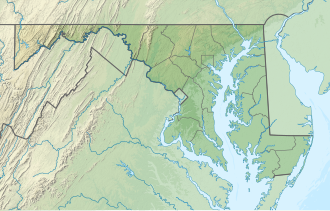| Harriet Tubman Underground Railroad State Park | |
|---|---|
 | |
| Location | Dorchester County, Maryland, United States |
| Nearest city | Cambridge, Maryland |
| Coordinates | 38°26′54″N76°08′19″W / 38.44833°N 76.13861°W [1] |
| Area | 17 acres (6.9 ha) [2] |
| Established | 2007; opened 2017 |
| Administered by | Maryland Department of Natural Resources |
| Designation | Maryland state park |
| Website | Official website |
Harriet Tubman Underground Railroad State Park is a Maryland state park dedicated to the life and work of abolitionist and Underground Railroad activist Harriet Tubman. The park is on Route 335 near Church Creek in Dorchester County, adjacent to Blackwater National Wildlife Refuge. [3]
